We’ve all been there. We’ve all had that moment where something didn’t click at school, and it hit us that maybe we weren’t as smart as we originally thought we were. It happens. It’s okay. No one can be great at everything. It doesn’t mean you aren’t as smart as the other person.
The world of child development has not seen a lot of change from its foundational theories. Many know of Piaget and his theory of cognitive development, fewer know of Vygotsky’s sociocultural theory, and it seems that even fewer know of my personal favorite, Howard Gardner’s Theory of Multiple Intelligences.
All the theories of child development have pros and cons. The Theory of Multiple Intelligences, however, is my favorite because of how inclusive it is.
There is a famous quote, “Everybody is a genius, but if we judge a fish on its ability to climb a tree, it will spend its whole life believing it is stupid. The question I have for you at this point of our journey together is, ‘What is your genius?’” While this quote has been misaligned as being from Albert Einstein, its message is what is important. It is difficult to judge the intelligence of one person over the possible intelligence of another. Every single human has been through different things in their lives with different educational and extracurricular opportunities. All of these things mold us into who we are and what we know.
Over the course of my nanny career, I’ve been blessed to take care of eight different children, all with incredible abilities toward different things. Of the family I’m with now, one of the twenty-two-month-old twins has this innate ability to learn from people. She observes someone doing something one time, such as undoing the baby locks, and then can perfectly replicate the same moves the other person did. Her older sister, however, struggles with her gross motor skills. Where she excels is her musical ability. Ever since I have known her, she has always loved music and can now sing songs in the perfect pitch without any kind of musical training. If we were to judge these children by the other’s natural abilities, they would both show up lacking. This is where Gardner’s Theory of Multiple Intelligences comes in.
Multiple Intelligences Theory: What is it?
Table of Contents
Howard Gardner believed that we as humans contain a variety of ways that we all receive and interpret data. In this case data can mean anything new that someone is learning. His theory states that there are eight different ways: Verbal-linguistic intelligence, logical-mathematical intelligence, spatial-visual intelligence, bodily-kinesthetic intelligence, musical intelligences, interpersonal intelligences, intrapersonal intelligences, naturalist intelligence, and existential intelligence. (Northern Illinois University)
This theory truly celebrates the unique qualities in all of us. They highlight our talents and strengths in a way that each child and adult who understands this can be made to feel special. Let’s get into the nitty gritty of Howard Gardner’s theory and talk about each of the intelligences.
The Intelligences
Verbal Linguistic Intelligence
Verbal Linguistic Intelligence can be defined as a sensitivity to the meaning and order of words, sounds, rhythms, phonology, syntax and different functions of language. To sum it up, anyone who is especially keyed into the way things sound. This is not necessarily a musical intelligence, but it differs in the way that there is no beat, no pitch or tune or anything else required to be gifted musically. These people are often verbal learners who can pick up on something after being told rather than shown. Oftentimes they excel in school and can enjoy word games like Scrabble or Wordle.
Logical-Mathematical Intelligence
This kind of intelligence is the ability to analyze situations or problems logically, to identify solutions, conduct scientific research and to solve mathematical and logical operations with ease.
The last family I worked with prior to my current one was a family made up of three girls: at the time of my departure, they were seven, four and four months. The seven-year-old struggled with dyslexia, or a neurological disorder where the letters on the page get jumbled up, and dysgraphia, which is a neurological disorder where people struggle with writing. Despite having these learning disorders, she excelled at mathematics. The child had the most interesting way of lining up numbers in her head to solve complex addition and subtraction problems that wasn’t so cut and paste according to what she was being taught in school. There was a comfort there that showed an incredible amount of flexibility with the numbers and operations that was astounding to me.
Oftentimes people who have this sort of intelligence are excellent at problem solving. They don’t look at mathematics as simple equations, but rather a way to relate to the world around them.
Spatial-Visual Intelligence
This intelligence is defined as the ability to perceive, analyze, understand, store and recall visual information. Memory has three components: encoding, or understanding, storage, and then retrieval, or recalling that specific information. These people are excellent at accessing their memory’s storage and retrieving the information they need.
Bodily-kinesthetic Intelligence
This type of intelligence might be a bit self-explanatory but let’s go over it for good measure. With Bodily-Kinesthetic intelligence, it is easy for someone to manipulate objects (like a ball) and use different kinds of physical skills. This intelligence involves having a keen sense of timing. If you read this description and thought of athletes of any kind: dancers, gymnasts, cheerleaders, football players, you’d be right, but the application of this intelligence does not end there. Since this type of intelligence requires manipulating objects, surgeons and especially crafty people would fall under this type of intelligence.
Musical Intelligence
Musical intelligence is considered the ability to create and appreciate rhythm, pitch, timbre, and harmony, as well as a special appreciation for different forms of musical expression.
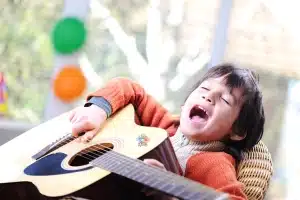
With my current family, I work with a four-year-old girl. She’s an absolute delight. I started working with her family right after she turned two, and ever since I can recall, she has had a keen ear for music. She asks to drive with her window open to hear the rhythm of the car tires as we pass them. She stops and listens to the birds singing, leans closer than my comfort likes to the bees in the flower beds to try to hear their buzz, which she calls their hum. She can remember song lyrics after one listen and can easily mimic complicated beats and rhythms. This is an example of someone who would fall under musical intelligence, instead of just enjoying music.
Interpersonal Intelligence
Gardner’s theory of interpersonal intelligence states that this intelligence is the ability to understand the intentions, motivations and desires of other people and work effectively with them. The type of children who possess this intelligence are often described as “people-person.” They’re likely to hang around the adult table at holidays and possess an innate ability to truly know someone else.
Intrapersonal Intelligence
A person who has intrapersonal intelligence can know themselves inside and out and can move on to understanding people. These people are motivated to apply what they learn in their lives like creating a daily beneficial habit. Many know that spending time on their phones before bed will make it harder to sleep, but few will take the step to remove their phones from their bedrooms and read a book instead. Where this applies for our children is when a teacher encourages a child to spend some extra time studying their spelling words for the week as they are behind. The child who has intrapersonal intelligence will do this without having to be reminded four times.
These people often have strong intuition, are aware of their own strengths and weaknesses, can control their feelings well and tend to have high self-confidence.
Naturalist Intelligence
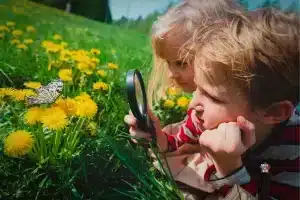
The Multiple Intelligence Theory: How Does this Help my Child?
With a theory so broad and expansive it is easy to see how this theory is inclusive and supportive of any child, but let’s get into the nitty gritty of how exactly this helps children. When we look at standardized testing, whether it is state testing or IQ tests, they are inflexible and only measure how well a student can memorize information, however in the United States there is an emphasis standardized tests. If teachers and parents to remember Gardner’s Theory of Multiple Intelligences, it will only help their students and children to remember that not all forms of intelligence can be quantified on a piece of paper and that their worth is so much more than the grade and percentage they receive.
The Gardner’s Theory of Multiple Intelligence Theory: What’s the Bad Part?
Like all theories, there are people who believe that this has its drawbacks. There are those who do not think that the Multiple Intelligence theory has its place in the modern-day classroom due to its lack of rigorous research. These people share a concern that educators who cannot facilitate learning styles in ways that benefit all their student’s many forms of intelligence will be labeled bad teachers. They also worry that if educators and administrators use time and resources trying to teach material in ways that fit each individual learner, then that is material and time wasted that could have been used to do something else that would benefit everyone instead of just one or two students.
FAQ
What makes Howard Gardner’s Theory of Multiple Intelligences different from other child development theories?
Gardner’s theory stands out because it acknowledges the diverse ways children interpret and learn new information. It goes beyond the traditional measures of intelligence to recognize that abilities in areas like music, interpersonal skills, and even understanding nature are also forms of intelligence.
How can I identify the kind of intelligence my child possesses according to Gardner’s theory?
Watch your child closely to see what interests them and how they engage with the world. Do they enjoy music or have a knack for understanding others? Are they good at solving problems or do they have a strong connection with nature? Their interests and strengths can guide you in identifying their dominant form(s) of intelligence.
Can a child possess more than one type of intelligence as per this theory?
Absolutely! Just like adults, children can have multiple interests and skills. Gardner’s theory of multiple intelligences acknowledges this diversity, suggesting that each person likely has a blend of different intelligences.
My child doesn’t seem to fit into any of the categories described in Gardner’s theory. What does this mean?
Don’t worry. Gardner’s theory is a framework that aims to encompass many, but not all possible intelligences. If your child doesn’t fit neatly into any one category, it doesn’t mean they aren’t intelligent. It simply means their intelligence may be unique or encompass aspects of multiple categories.
What can I do to nurture my child’s specific type of intelligence?
The best approach is to follow your child’s lead. Encourage their interests and provide opportunities for them to explore and develop these areas. This can be through activities, classes, or simply conversation and engagement. Remember, the goal isn’t to force an interest, but to support your child in their natural inclinations.
What if my child does not fit into any of Gardner’s Theory of Multiple Intelligences?
Don’t panic. Gardner’s Theory of Multiple Intelligences is just that. A theory. While it is welcoming of many kinds of intelligences in children, it might not encompass something about your child.
How do I nurture whatever kind of intelligence my child possesses?
Follow their lead. Your child will reveal what they are interested in if you give them time, space, and freedom to work it out. It is so easy for us to insert our own interests onto our children because they are things that we like to spend our free time doing, however that’s not always what’s best. Let your child figure out who they are separate from your influence.
Provide them with activities that give them the chance to foster their interests. Enroll them in sports or music class, help them grow a small garden wherever you have space for it, teach them how to play board games and talk to them like they are real people with developing likes, dislikes and opinions.
If you don’t have the funds for activities, it is okay. I promise your child is not suffering. The local libraries usually have a bevy of free activities that can help your child to flourish into who they are already becoming. Search google and Pinterest for ideas of things that your child might like to do, like a make your own guitar or starting a container garden.
In conclusion, one of the best things you can do for the children in your life is to celebrate their differences. We are not alike, and it can be said that we do not all learn the same way. In order to build confidence, celebrate your child as who they are outside of the way the education system convinces us we need to be. It is and always will be far more important for your child to feel confident and strong in who they are as opposed to how well they answer questions on test and in school.
References:
NIU.EDU Instructional Guide on Gardner’s Theory of Multiple Intelligences
Components of Multiple Intelligences
Stop Using Multiple Intelligence Theory


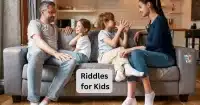

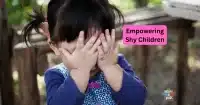





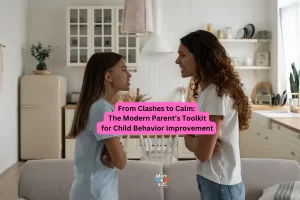


Add Comment